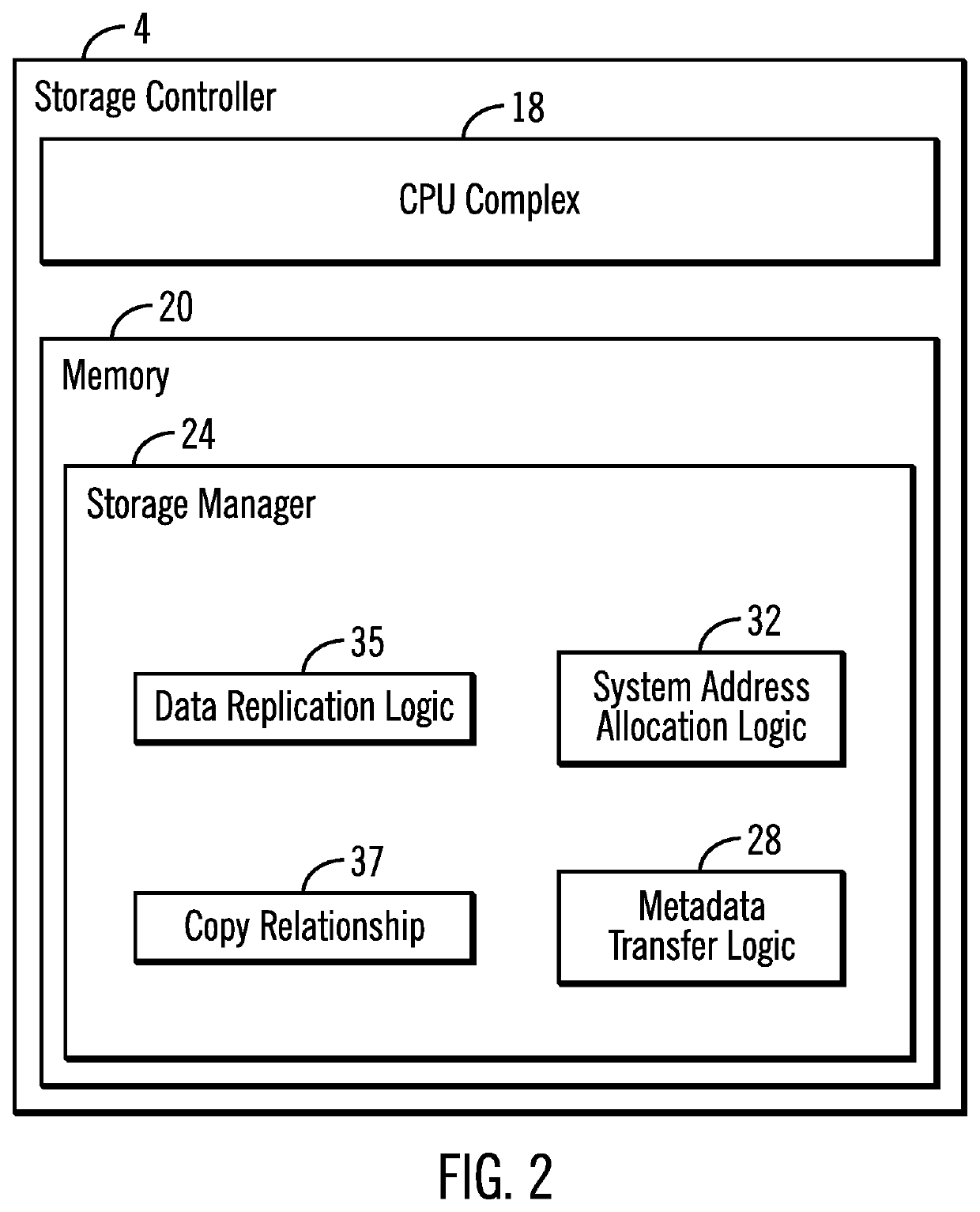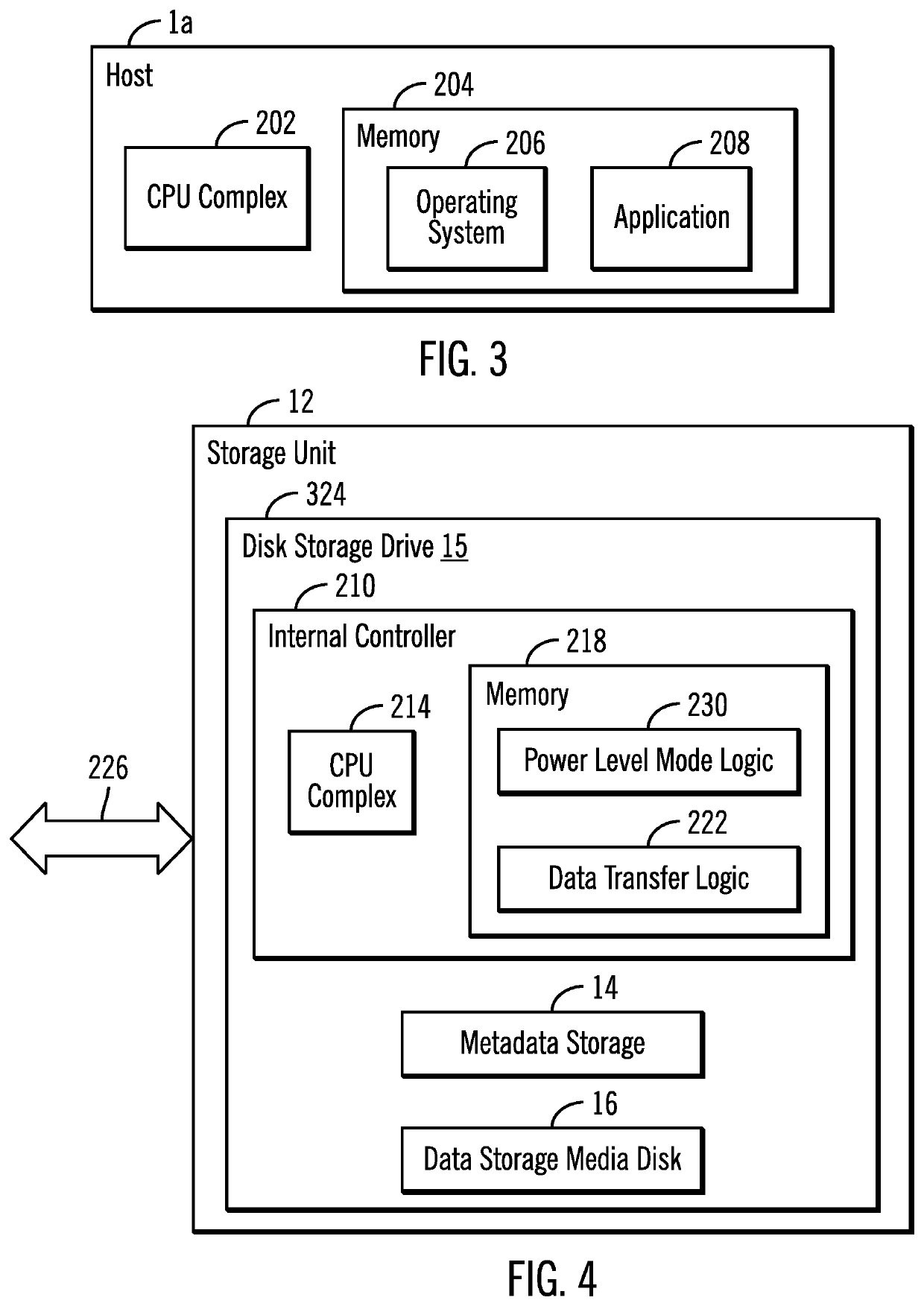Power level management in a data storage system
a data storage system and power level management technology, applied in the direction of data processing power supply, instruments, climate sustainability, etc., can solve the problems of large power consumption of hard disk drives, large heat generation, motors consuming substantial power, etc., to reduce power consumption and cooling requirements associated with disk storage drives, reduce power consumption and cooling, the effect of improving computer technology
- Summary
- Abstract
- Description
- Claims
- Application Information
AI Technical Summary
Benefits of technology
Problems solved by technology
Method used
Image
Examples
Embodiment Construction
[0025]In one aspect of power level management in accordance with the present description, a storage unit has both a disk storage drive, and another non-volatile memory or storage such as a solid state drive, for example, in parallel to the disk storage drive of the storage unit to provide direct access to metadata stored exclusively on the parallel storage even though the data storage media disk of the disk storage drive may be stopped or spinning at a reduced rate of rotation in a low power level mode. In one embodiment, the parallel non-volatile storage referred to herein as the “metadata storage,” may be implemented using a non-volatile storage drive lacking a data storage media disk which requires spinning at a high rate of rotation for input / output operations.
[0026]Utilizing power level management in accordance with the present description can improve computer technology. For example, power consumption and cooling requirements associated with disk storage drives, may be reduced...
PUM
 Login to View More
Login to View More Abstract
Description
Claims
Application Information
 Login to View More
Login to View More - R&D
- Intellectual Property
- Life Sciences
- Materials
- Tech Scout
- Unparalleled Data Quality
- Higher Quality Content
- 60% Fewer Hallucinations
Browse by: Latest US Patents, China's latest patents, Technical Efficacy Thesaurus, Application Domain, Technology Topic, Popular Technical Reports.
© 2025 PatSnap. All rights reserved.Legal|Privacy policy|Modern Slavery Act Transparency Statement|Sitemap|About US| Contact US: help@patsnap.com



